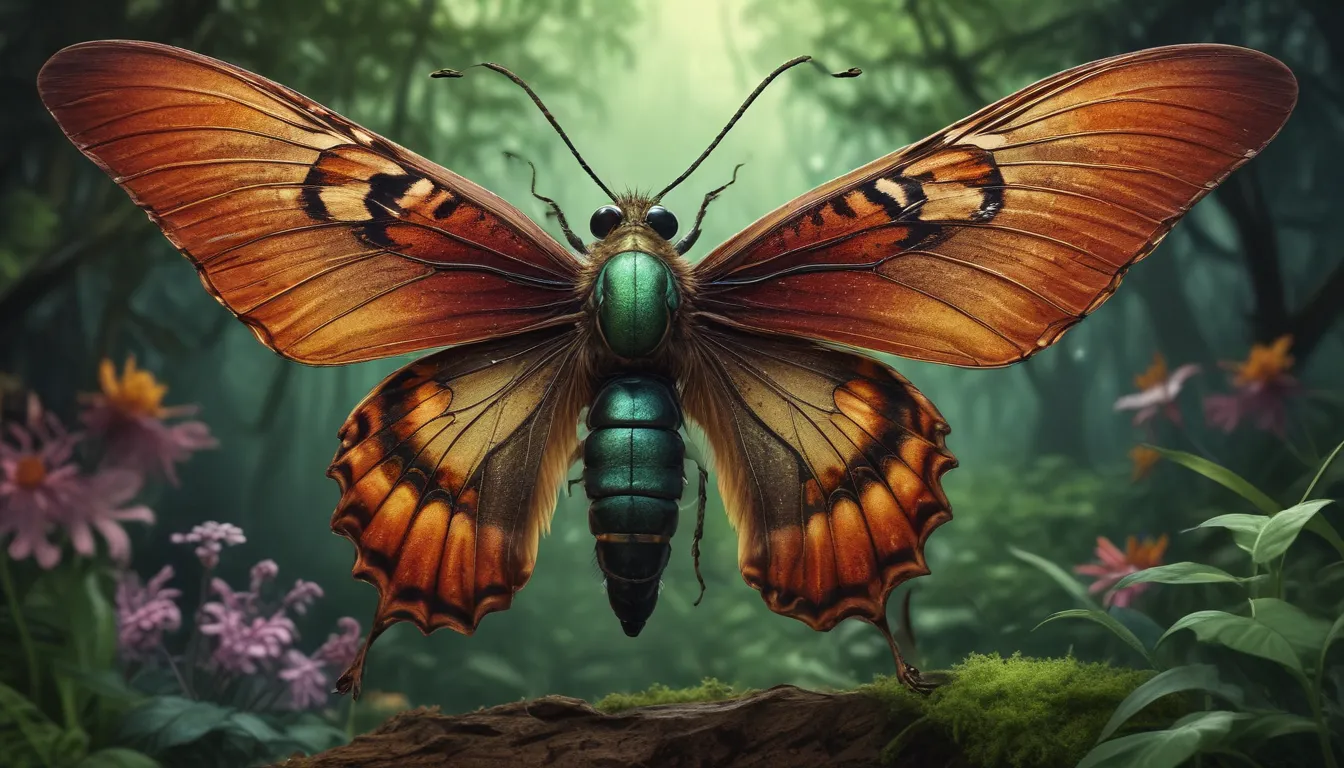The pictures we use in our articles might not show exactly what the words say. We choose these pictures to make you interested in reading more. The pictures work together with the words but don’t take their place. The words still tell you the important facts.
Welcome to the enchanting world of insects, where tiny creatures with a big impact thrive in every corner of our planet. From their diverse species to their incredible survival strategies, insects continue to intrigue scientists and nature enthusiasts alike. In this article, we will delve into 15 captivating facts about insects that shed light on their remarkable characteristics and significance in our ecosystems.
1. The Wonderful World of Insects
Insects reign as the most diverse group of animals on Earth, with over 1 million identified species. From the industrious ants that build intricate societies to the majestic butterflies that embark on incredible transformations, insects showcase a wide array of shapes, sizes, and colors. Wherever you go, you are bound to encounter these fascinating creatures buzzing around, making their mark in our ecosystem.
2. A Legacy Millions of Years Strong
Insects have a remarkable history that spans over 350 million years, adapting and evolving through changing climates and environments. These resilient creatures have faced mass extinctions and come out stronger, proving their ability to navigate the challenges of nature with finesse. Their longevity is a testament to their extraordinary survival skills and adaptability.
3. Guardians of Ecosystems
Insects play a vital role in our ecosystems, serving as essential pollinators that facilitate plant reproduction. By transferring pollen from one flower to another, insects like bees ensure the continued growth of fruits, vegetables, and nuts. Additionally, insects serve as a crucial food source for many animals higher up in the food chain, highlighting their importance in maintaining ecological balance.
4. The Art of Flight
Some insects possess remarkable flying abilities that are nothing short of awe-inspiring. From the agile dragonflies that can maneuver in any direction to the bees that navigate using polarized light, insects have mastered the art of flight with precision. Their ability to hover, glide, and perform acrobatic maneuvers showcases their exceptional adaptability and agility in the air.
5. Ants: Masters of Teamwork
Ants are renowned for their impressive teamwork and organizational skills, working together seamlessly to build intricate nests, forage for food, and defend their colonies. Through chemical signals called pheromones, ants communicate effectively, showcasing a level of coordination and cooperation that is truly remarkable in the insect kingdom.
6. The Strength of Spider Silk
Spider silk is a marvel of nature, boasting strength and elasticity that surpasses that of steel. Pound-for-pound, spider silk is stronger than steel yet infinitely more flexible, allowing spiders to create intricate webs for catching prey or constructing protective shelters. The engineering prowess of spiders is evident in the complexity and durability of their silk structures.
7. Buzzing Pollinators: The Importance of Bees
Bees take center stage as one of nature's most critical pollinators, playing a pivotal role in plant reproduction by transferring pollen between flowers. Without bees, many plant species would struggle to survive, underscoring the indispensable role these buzzing insects play in sustaining our ecosystems and agricultural practices.
8. Insects: Masters of Adaptation
Insects can be found thriving in nearly every habitat on Earth, showcasing their unparalleled adaptability to diverse environments. Whether in the depths of the ocean or atop the highest mountain peaks, insects have conquered deserts, forests, grasslands, and urban landscapes, proving their ability to navigate and thrive in a multitude of habitats.
9. Metamorphosis Magic: The Life of Butterflies
The life cycle of a butterfly is a mesmerizing spectacle of nature, unfolding in stages that showcase the beauty of transformation. From egg to caterpillar to chrysalis and finally, to a vibrant butterfly, this metamorphosis reveals the wondrous journey and resilience of these enchanting insects as they take flight and grace our world with their presence.
10. Termites: Architects of Intricate Structures
Termites showcase masterful architectural skills, building elaborate mounds and underground tunnels using soil, saliva, and their waste. These structures can reach towering heights of up to 30 feet and boast sophisticated air conditioning systems that regulate temperature and humidity, reflecting the engineering prowess of these industrious insects.
11. The Art of Camouflage
Insects like stick insects and leaf insects have developed extraordinary camouflage abilities that allow them to blend seamlessly into their surroundings, evading predators and enhancing their chances of survival. Their remarkable mimicry of leaves and branches showcases the ingenuity and adaptability of insects in navigating the complex world of predator-prey interactions.
12. Illuminating Insects: Bioluminescence Wonders
Some insects, such as fireflies, possess the unique ability to produce light through bioluminescence, a captivating natural phenomenon. From attracting mates to warding off predators, insects harness the power of light to communicate, navigate, and survive in their habitats, showcasing the diverse and innovative strategies they employ for survival.
13. Complex Societies in the Insect World
Social insects like ants, bees, and termites exhibit highly organized societies with distinct roles for each member, including queens, drones, and workers. Through intricate communication systems involving chemicals, sounds, and vibrations, these insects collaborate effectively, highlighting the sophisticated and interconnected nature of insect societies.
14. A Treasure Trove of Scientific Discoveries
Insects have long been a source of scientific fascination, with researchers uncovering a wealth of insights into their remarkable adaptations, behaviors, and genetics. From advancements in medicine to engineering breakthroughs, the study of insects has led to significant contributions across various fields, underscoring the invaluable role these tiny creatures play in expanding our knowledge and understanding of the natural world.
15. The Art of Survival
Insects have honed a multitude of survival strategies to overcome obstacles and thrive in challenging environments. From mimicry to regeneration and even feigning death, insects showcase a diverse array of survival tactics that highlight their resilience, ingenuity, and adaptability in the face of adversity.
In conclusion, insects stand as fascinating ambassadors of nature, weaving a tapestry of diversity, resilience, and ingenuity that captivates and inspires us. The 15 facts presented here offer a glimpse into the intricate world of insects, inviting us to appreciate and learn more about these extraordinary creatures that shape our ecosystems and enrich our lives.
Next time you encounter an insect, take a moment to marvel at their incredible adaptations and contributions to the world around us. As we continue to explore and appreciate the wonders of the insect kingdom, let us embrace the lessons they teach us about resilience, cooperation, and the beauty of diversity in nature.
FAQs
Q: How many species of insects are there?
A: There are an estimated 1.5 million known species of insects, with scientists believing there may be millions more waiting to be discovered.
Q: Can insects communicate with each other?
A: Yes, insects employ a variety of communication methods, including pheromones, sounds, vibrations, and visual cues, to interact and coordinate within their societies.
Q: Are all insects harmful to humans?
A: While some insects may pose a threat or nuisance to humans, the majority of insects play critical roles in ecological processes and do not pose a direct danger to humans.
Q: Do insects have a lifespan?
A: Insects exhibit varying lifespans based on their species, with some living only a few days while others can survive for several months or even years, depending on their environment and lifestyle.
Q: Can insects fly?
A: Many insects are capable of flight, utilizing their wings and specialized flight muscles to navigate their surroundings and fulfill essential functions in their ecosystems.
As we embark on a journey of discovery and appreciation for the wonders of the insect world, let us continue to marvel at the intricate beauty and resilience of these captivating creatures that enrich our lives and ecosystems. Join us in celebrating the remarkable world of insects and the invaluable contributions they make to our planet's biodiversity and harmony.






